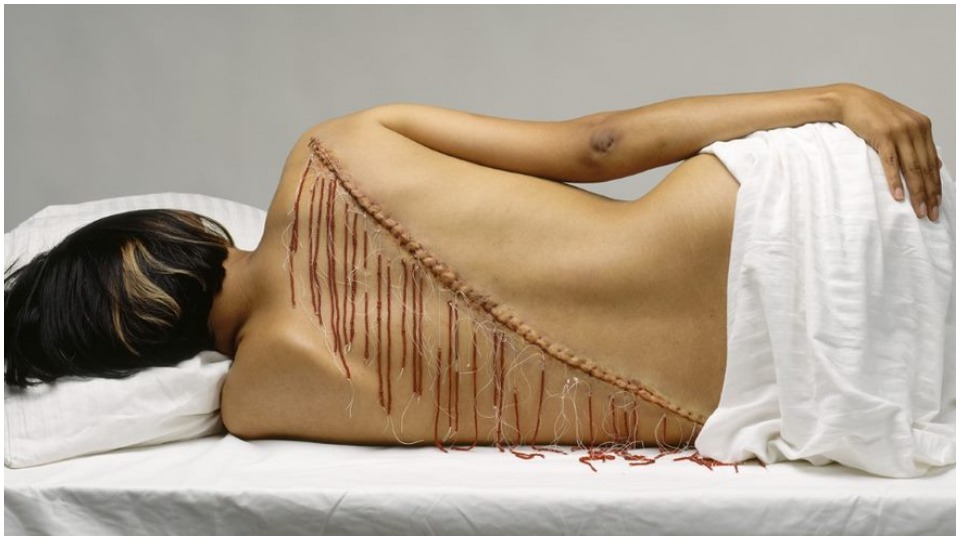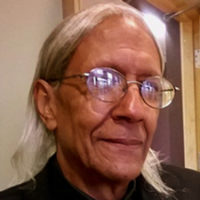
NASHVILLE, Tenn.—Hurry, hurry! On Sept. 27, the Frist Art Museum of Nashville opened the groundbreaking exhibition Hearts of Our People: Native Women Artists. This is the first museum exhibition exclusively devoted to Native American women artists from the United States and Canada. The exhibition closes on Jan. 12, 2020, in Nashville and then opens in other galleries.
This exhibition, organized by the Minneapolis Institute of Art (MIA), illustrates how the art of Native American women, both ancient and contemporary, influenced all American art, including the abstract. The exhibition first opened at the MIA before coming to Nashville.

The importance of Indigenous women’s art cannot be exaggerated. The exhibition highlights the artistic accomplishments of Native women and presents the vast achievements of these extraordinary artists over the centuries. To tell such a stellar story, a diversity of perspectives was required, and to that end, an assembly of Native artists, academics, museum professionals and non-Native curators and scholars came together to create the show and provide interpretation for it.
“The comprehensive exhibition is important on so many levels. Almost one-half of the works of art are by living artists. The art speaks to the past and the present and the present moment is very critical,” says Katie Delmez, curator of the Frist Museum. Delmez continues, “The mission of the Frist is to help people look at the world in new ways, to see how art can be an agent of connectivity.”
There are 115 works of art comprising this groundbreaking exhibition. The artworks include sculpture, paintings, contemporary Indigenous attire, pottery, baskets, traditional clothing, beadwork, and video and installation arts. It also includes examples of many creative and innovative techniques.
The subject matter is divided into three main areas: Legacy, Relationships, and Power. Legacy examines the myriad ways in which Native women artists appreciate their heritage, producing works that bring forth the experience of previous generations while addressing the present and contemplating the future. In the theme of Relationships, recognition is given to the concept of bonds that the human world has with the animals, nature and other realities that the mainstream society either does not recognize, ignores, or is unaware of as having legitimacy. Power embraces the concept of dialogue and influence, the ability to impact others and empower oneself. Of great importance is that each Native artist accentuates the culmination of her individual experience, expertise, and technique in her work.
All of the works are outstanding, and none more so than the exhibit Fringe by Rebecca Belmore (Anishinaabe), which highlights a photograph of a Native woman lying on a clinical white sheet with another sheet covering her hips and thighs, with her back to the camera. A large diagonal scar crossing her back is stitched with crude sutures and from the sutures hang strings of very tiny red beads. From across the room, the strings of beads appear to be streaks of red paint symbolizing blood. Only upon close observation can it be discerned that the streaks of blood are strings of beads. This display is meant to portray the oppression suffered by Native people from colonial tormentors.
Also striking, with much reflective meaning, is the refurbished black-on-black 1985 Chevy El Camino by Rose B. Simpson (Santa Clara Pueblo). Simpson is a trained auto mechanic and body finisher. She did all the engine work on the vehicle and the customized black paint job. The paint job was done to resemble the blackware pottery of celebrated San Ildefonso Pueblo artist Maria Martinez. Examples of her famous pottery are displayed with the El Camino.
Entrancing is the expressive, large-scale painting The Wisdom of the Universe by Métis artist Christi Belcourt, depicting endangered animals and plants rendered in a bead-like style. At first glance, it appears that the images are actually made of tiny beads.

Marianne Nicolson (Kwakwaka’wakw) brings forth thoughts of the spiritual world in her Bax’wana;tsi: The Container for Souls, a hypnotic, funereal installation that envelops an entire gallery space with images of the Dzawada’enuxw First Nation people’s traditional symbols projected from a glowing glass chest. This was truly innovative to experience.
Among the other many stellar works, there is a display of crushed bone china positioned in front of a video of running buffalo. This reflects the period when the buffalo were slaughtered in U.S. government campaigns to conquer the Native nations of the Plains.
The founding co-curators of the exhibition are Jill Ahlberg Yohe, associate curator of Native American art at the MIA, and Teri Greeves, Kiowa artist and scholar. Special recognition for the exhibition also goes to Dakota Hoska (Lakhota), research assistant.

At each step of the curatorial process, the curators worked very closely with an all-female Exhibition Advisory Board composed of 21 additional women, most of whom are also Native American artists and scholars involved in the development of the exhibition’s main themes. The Board also contributed to determining the form and content of the Exhibition literature and programming.
Hearts of Our People recognizes that Naive women have for so long been the creative force in Native American art. But as the first major exhibition devoted exclusively to their artistic efforts, it is meant to be a tribute to all Native American women artists and their families, and their nations, past and present.
After the Nashville venue, the exhibition heads to the Renwick Gallery, a branch of the Smithsonian American Art Museum, in Washington, D.C. This exhibition truly deserves careful reflective viewing and multiple visits.

MOST POPULAR TODAY


Zionist organizations leading campaign to stop ceasefire resolutions in D.C. area

High Court essentially bans demonstrations, freedom of assembly in Deep South

Afghanistan’s socialist years: The promising future killed off by U.S. imperialism

Communist Karol Cariola elected president of Chile’s legislature






Comments